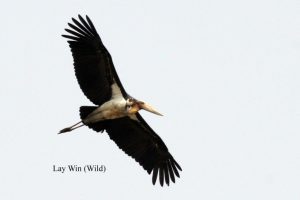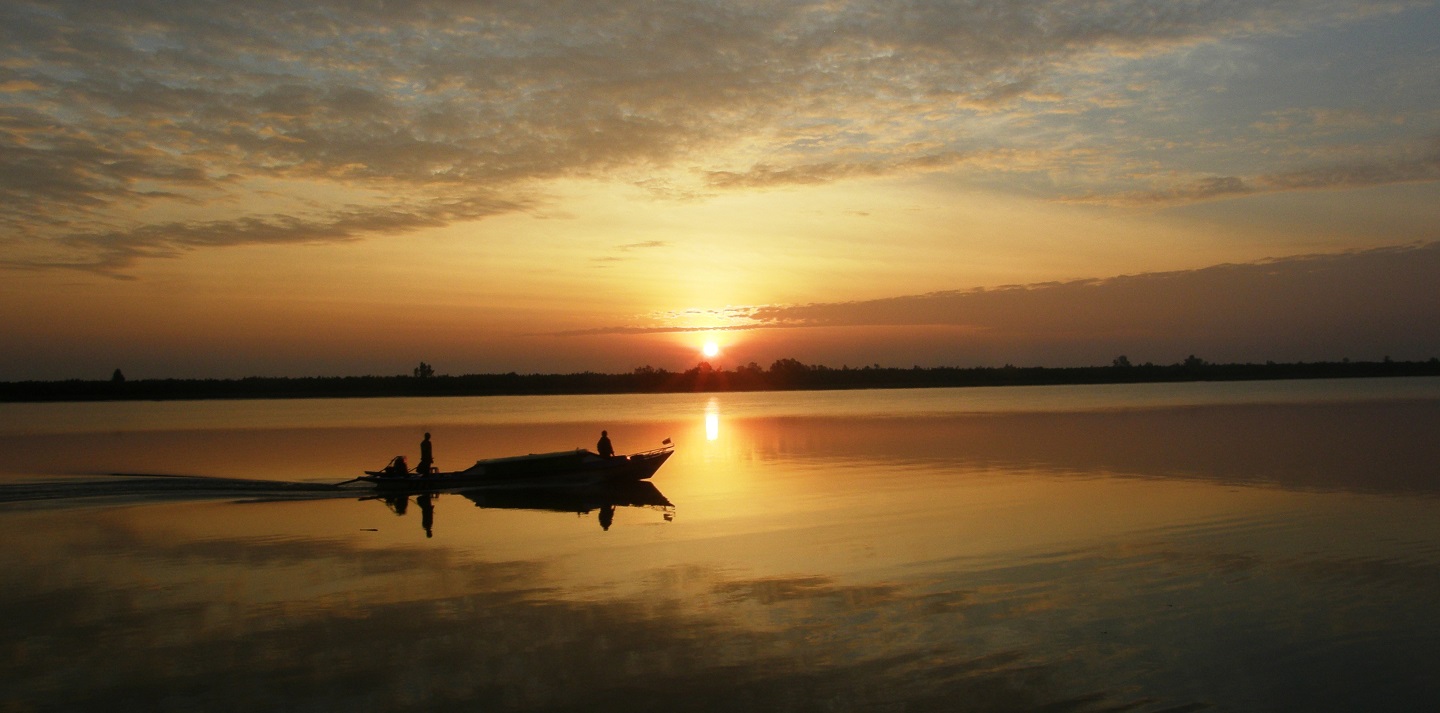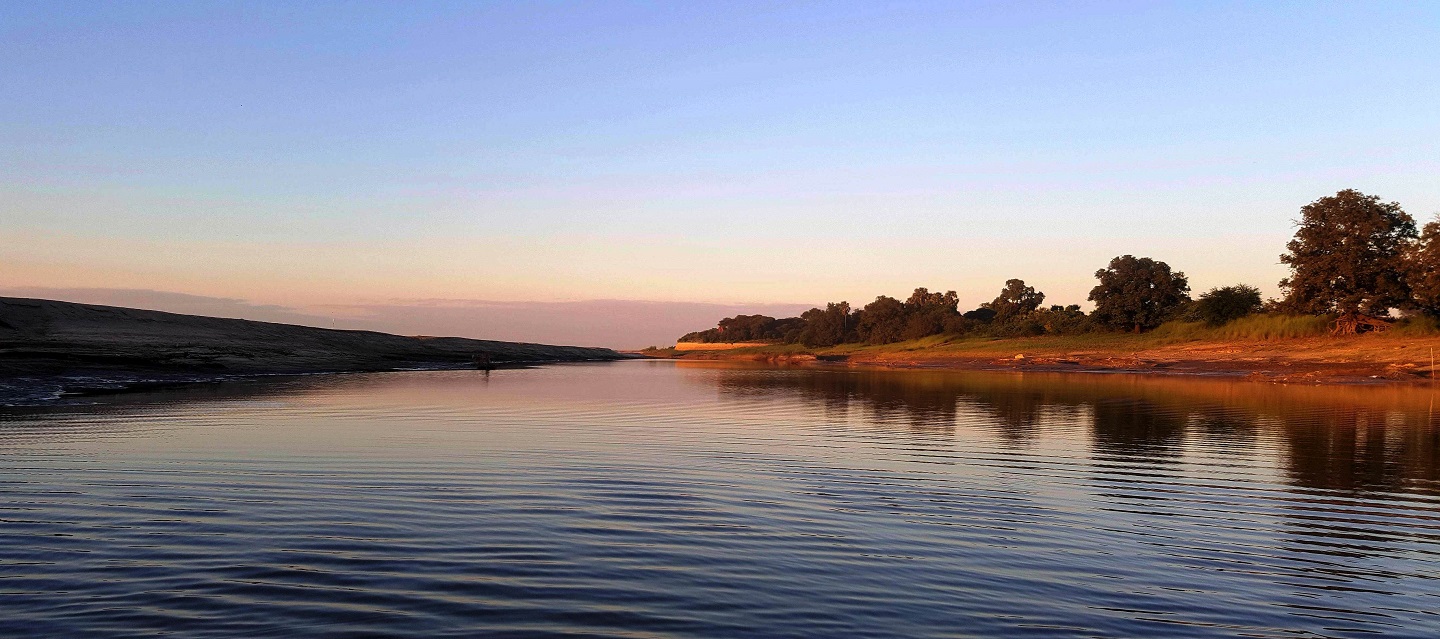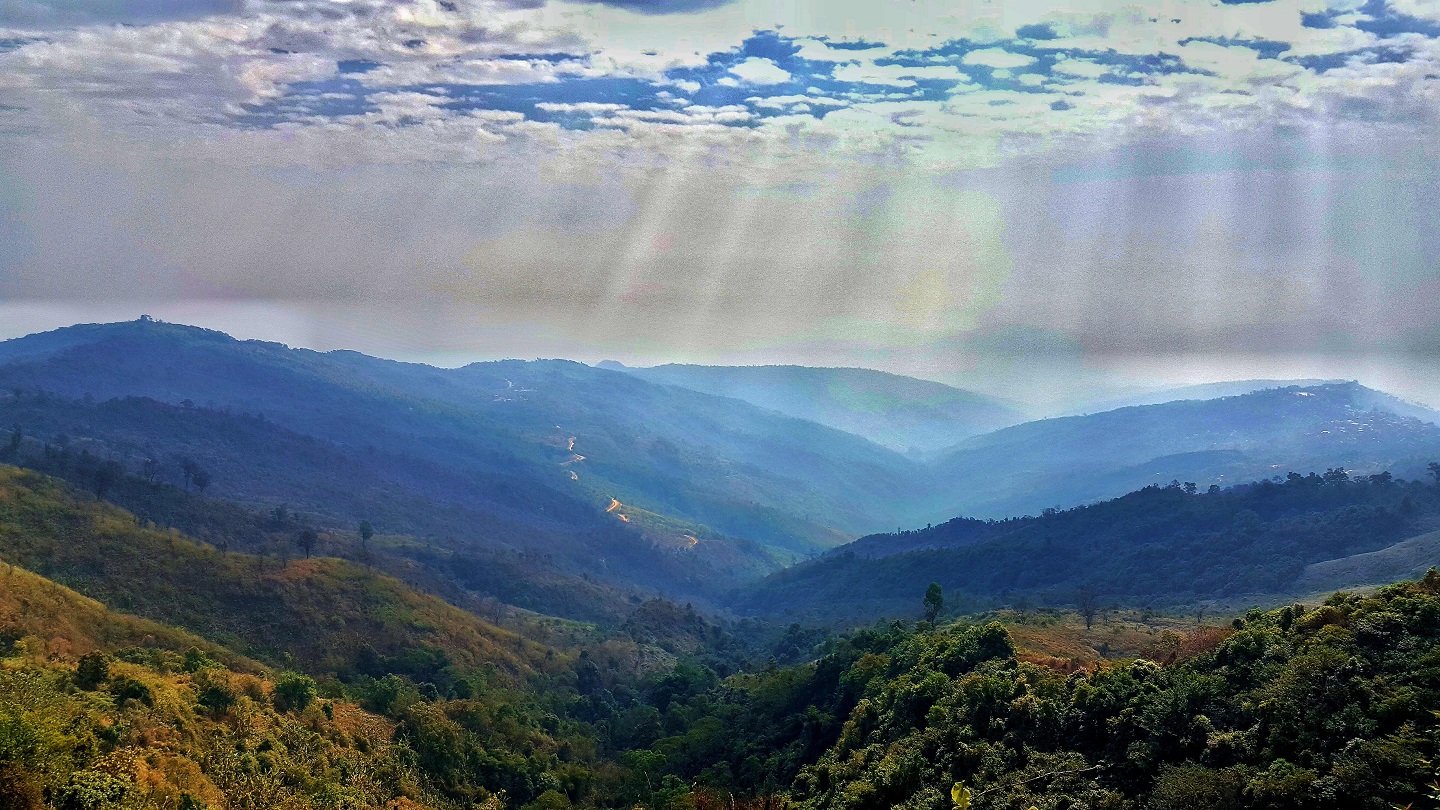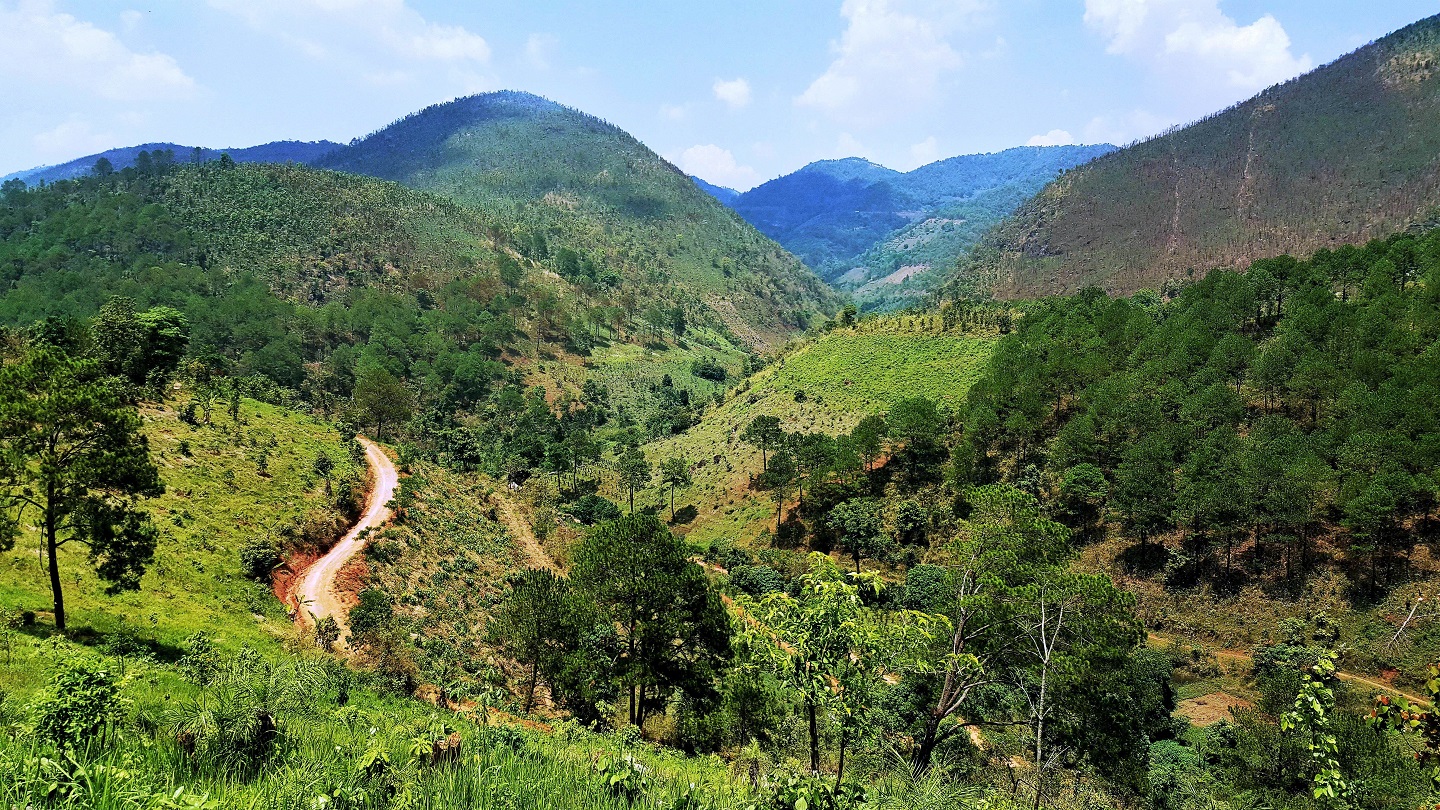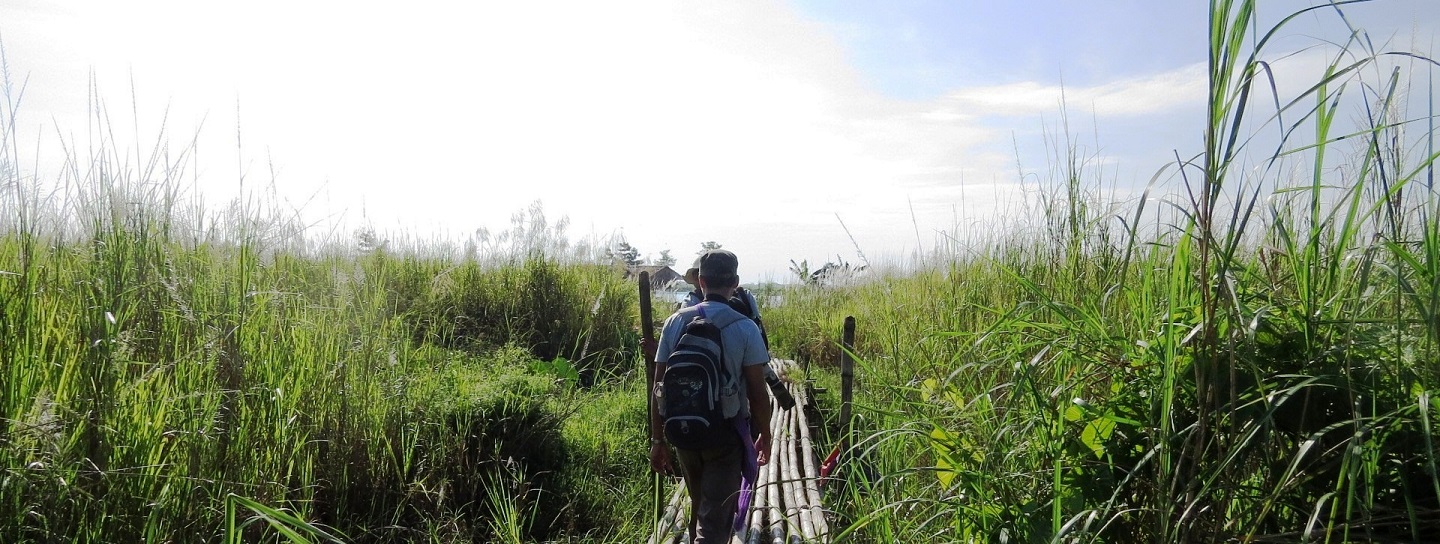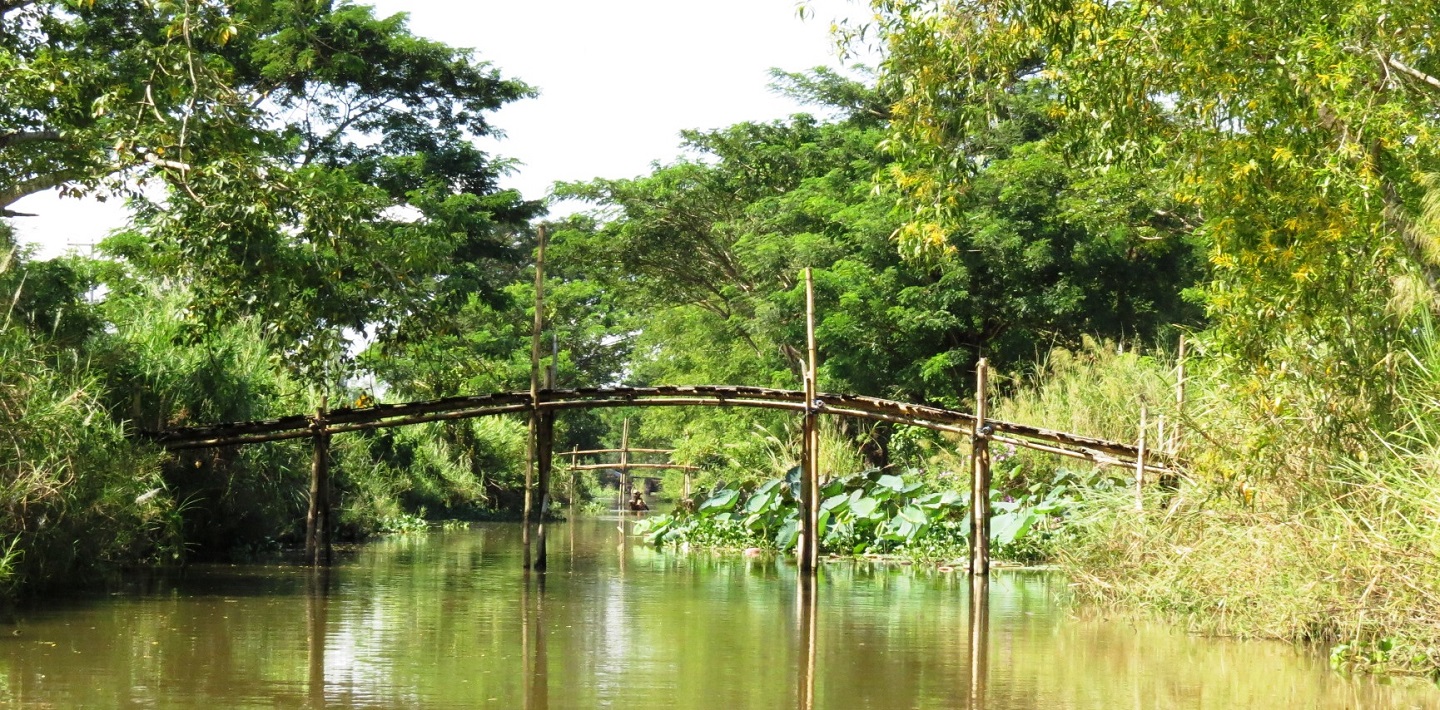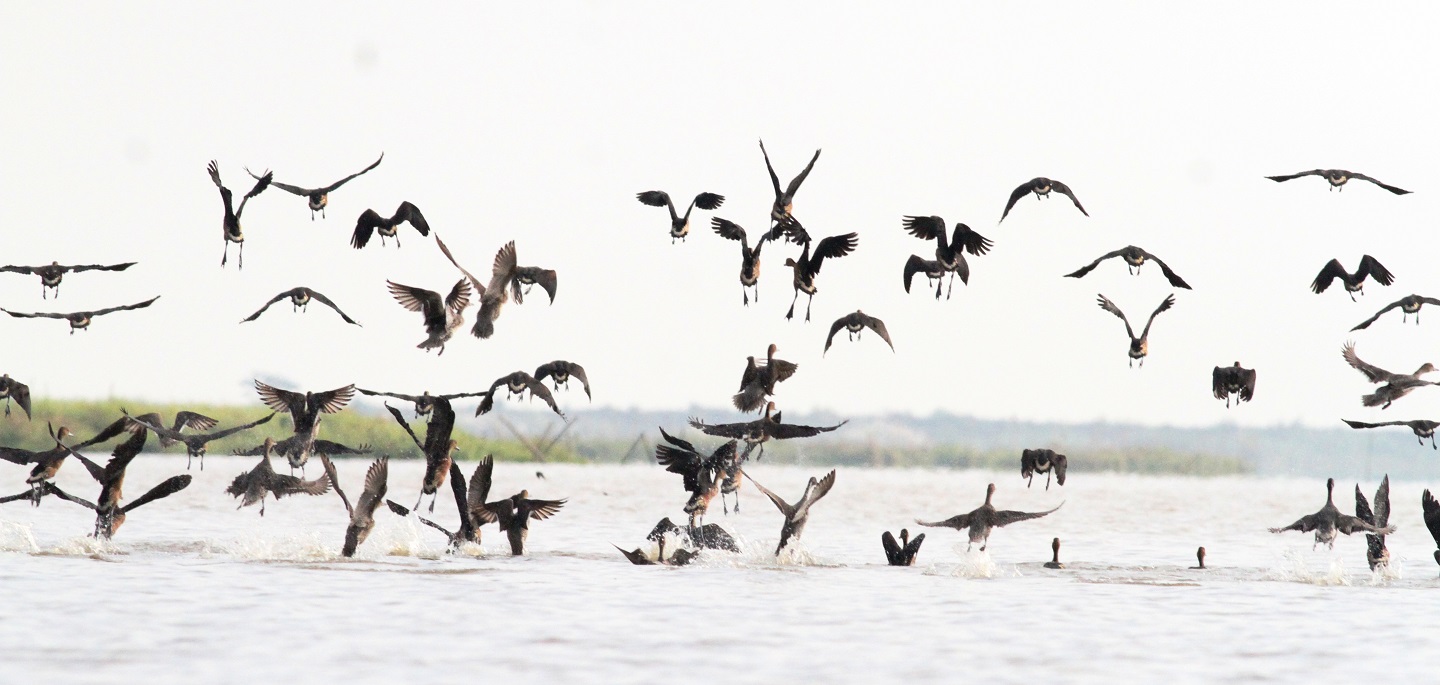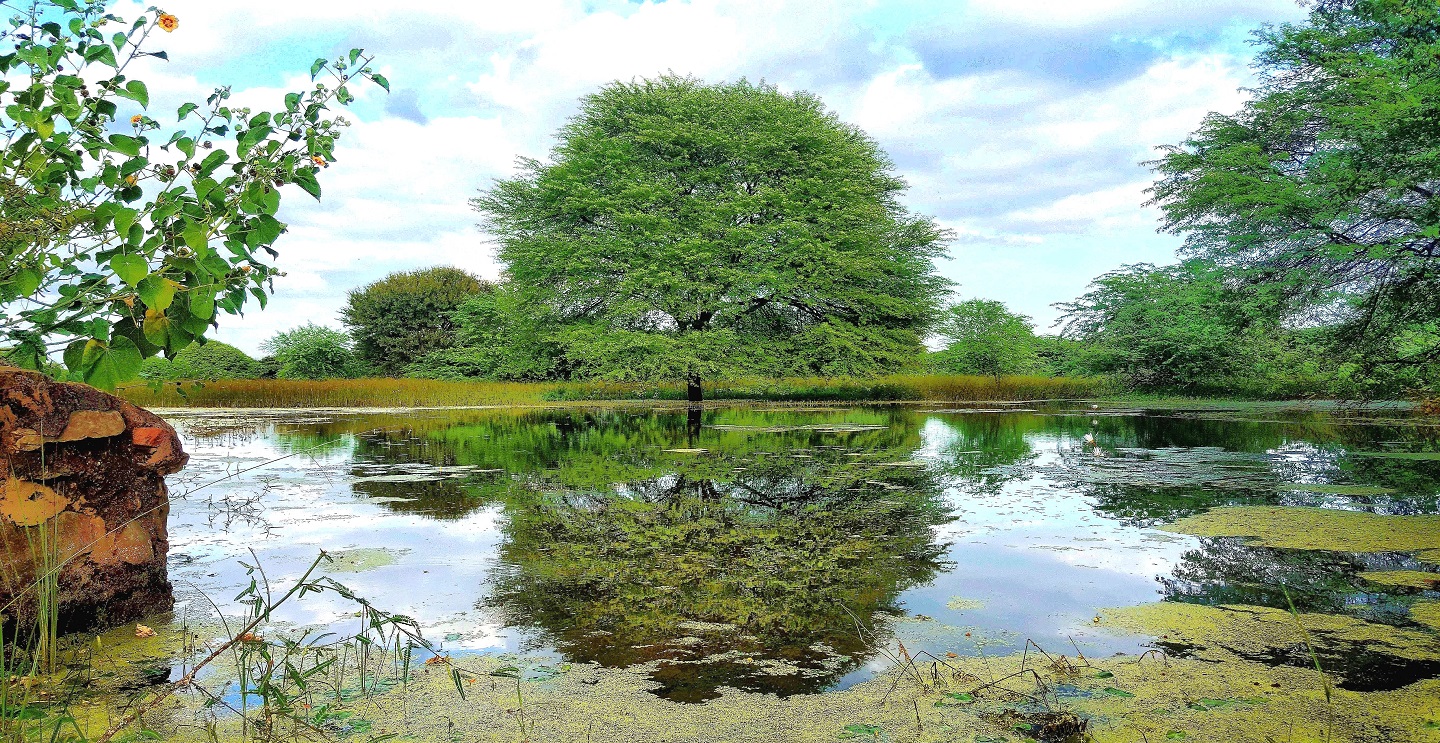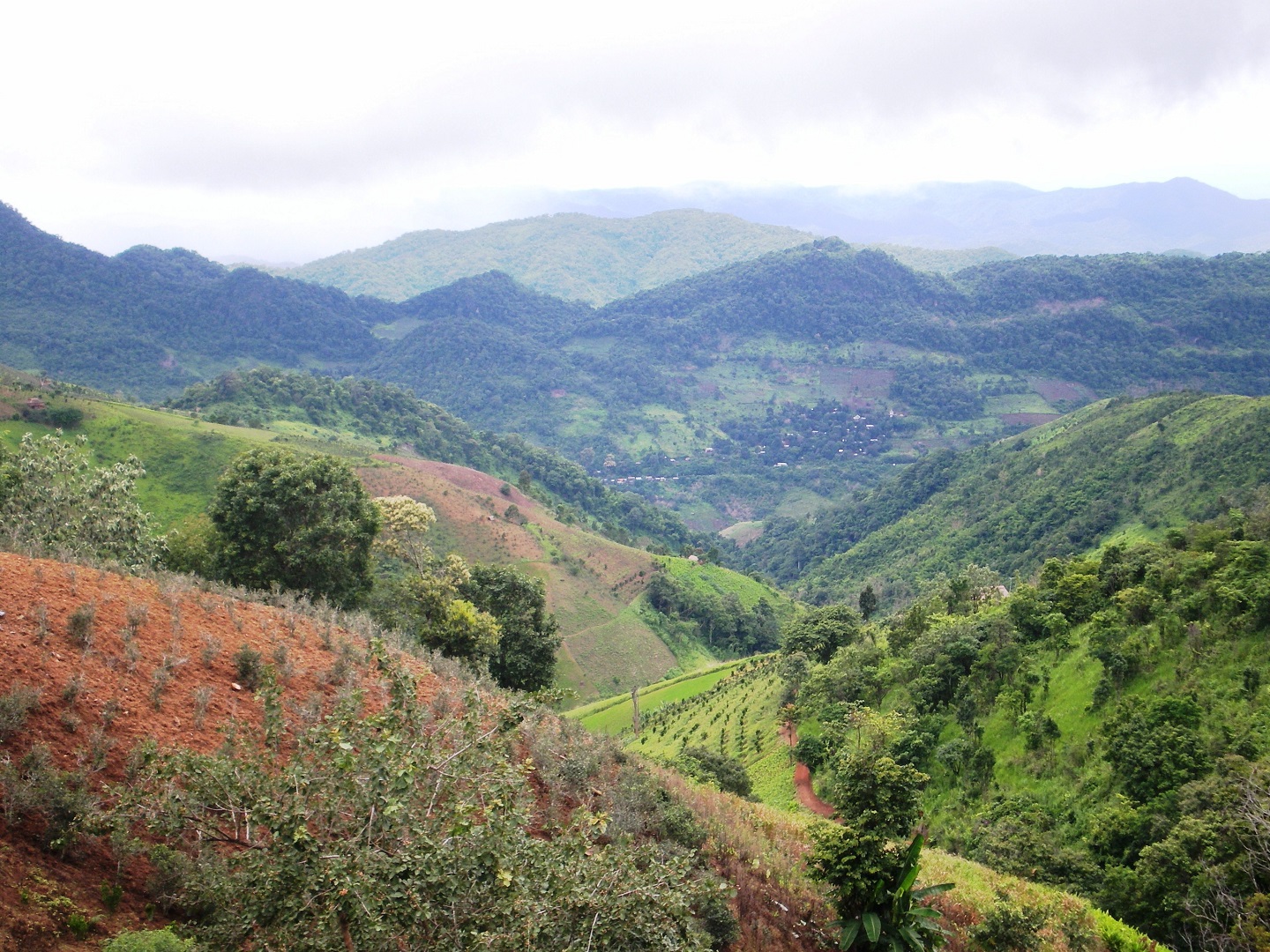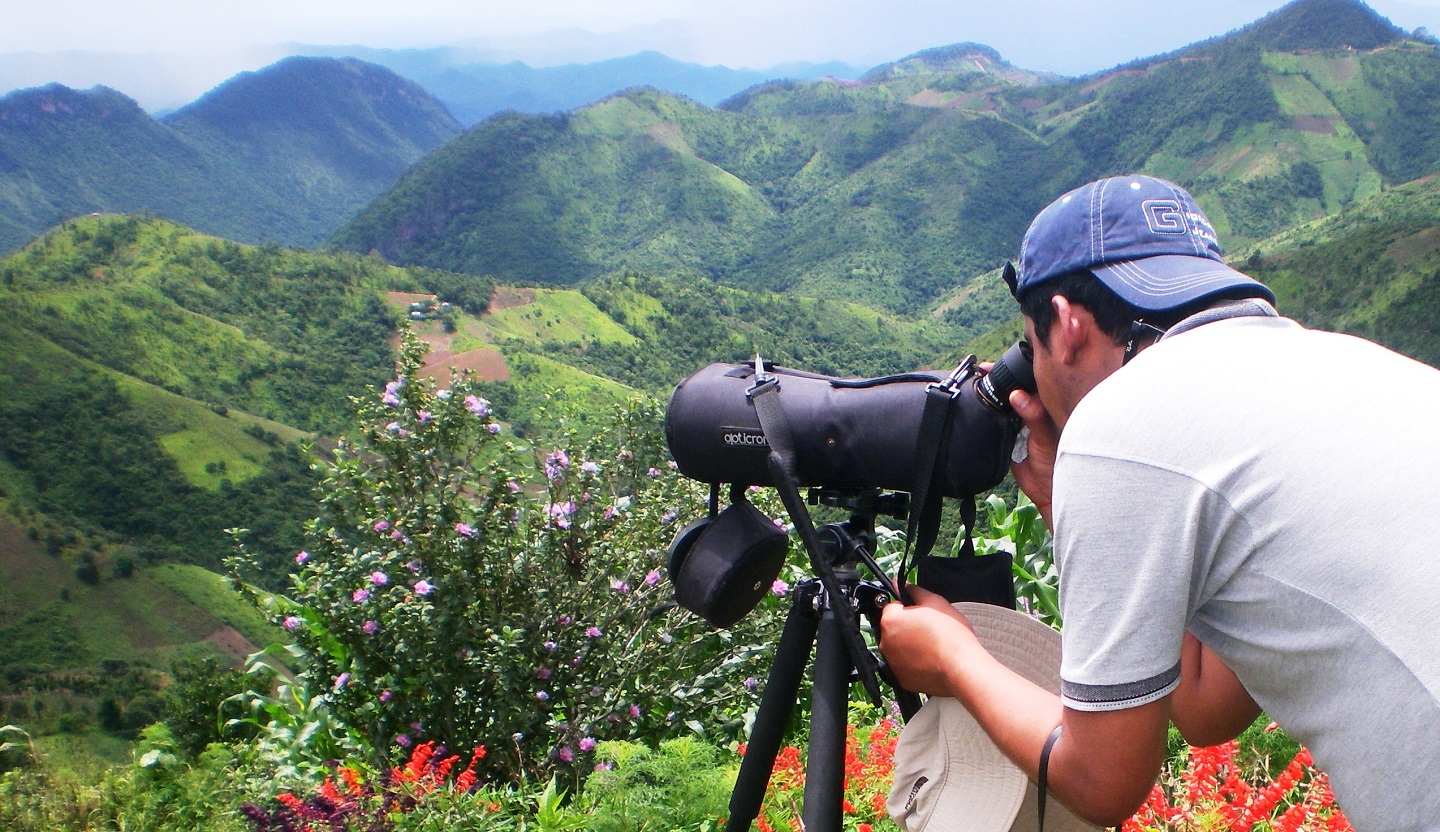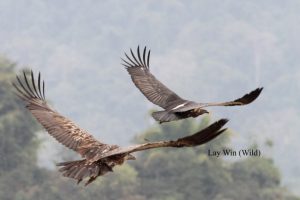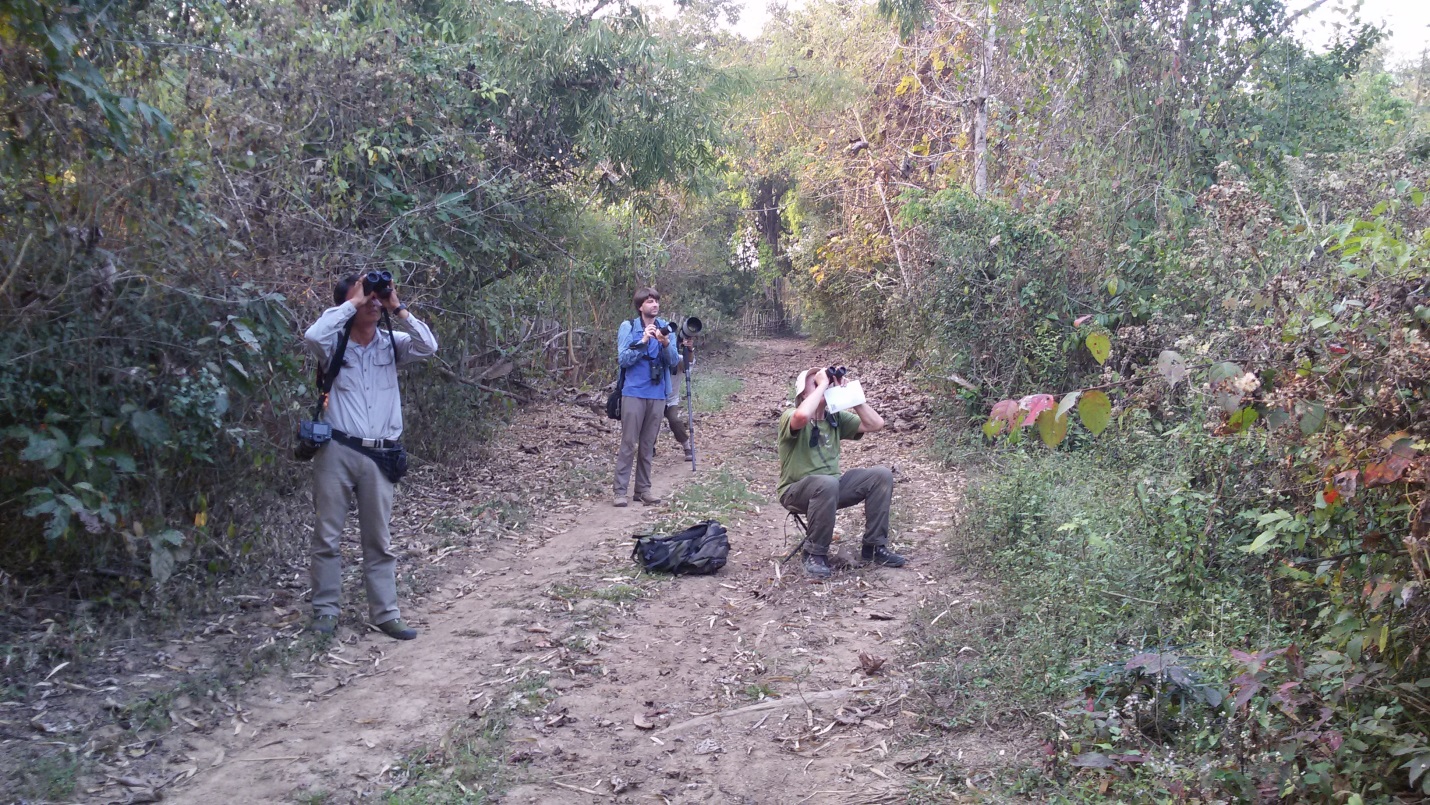
Lay Win
February 2016
Bird Watching Tour Expedition in Indawgyi Wildlife Sanctuary
February, 2016
Introduction
Bird watching is in the early stage in Myanmar though the country is in rich of various kinds of habitats and avifauna. There are 1120 bird species in Myanmar (according to: July 2015 update Myanmar checklist - unpublished). Birders from all over the world are interested to come and see Myanmar birds: six endemic, more than ten near endemic species and many globally threatened species as well.
Indawgyi Lake, the biggest lake in Myanmar and third biggest in Southeast Asia, is situated in Kachin state, northern Myanmar. Not only the water body but also its watershed areas are preserved and protected as Indawgyi Wildlife Sanctuary. It is ASEAN Heritage and RAMSAR site, very rich in biodiversity and well known as the most import area in Myanmar for migratory water bird during the winter season. There are about 300 species of terrestrial birds and water birds recorded in the sanctuary. More than 10 villages are situated near the lake shore. Fauna and Flora International (FFI) is implementing a conservation project in collaboration with Ministry of Environment Conservation and Forestry.
Objectives
The aim and objectives of the bird watching expedition is to find the new route and collect the data along the route, to improve the capacity of local bird guide in Inn Chit Thu ecotourism group and to promote the eco-tourism i.e bird watching tour around Indawgyi Lake.
Methods
Six routes were selected during the expedition in the area of Indawgyi wildlife sanctuary. Not only bird species but also the situation of routes and habitats were noted down.
Suggestion routes for bird watching tour
There are six bird watching routes in the area of Indawgyi region, mostly are based from Lonton village.
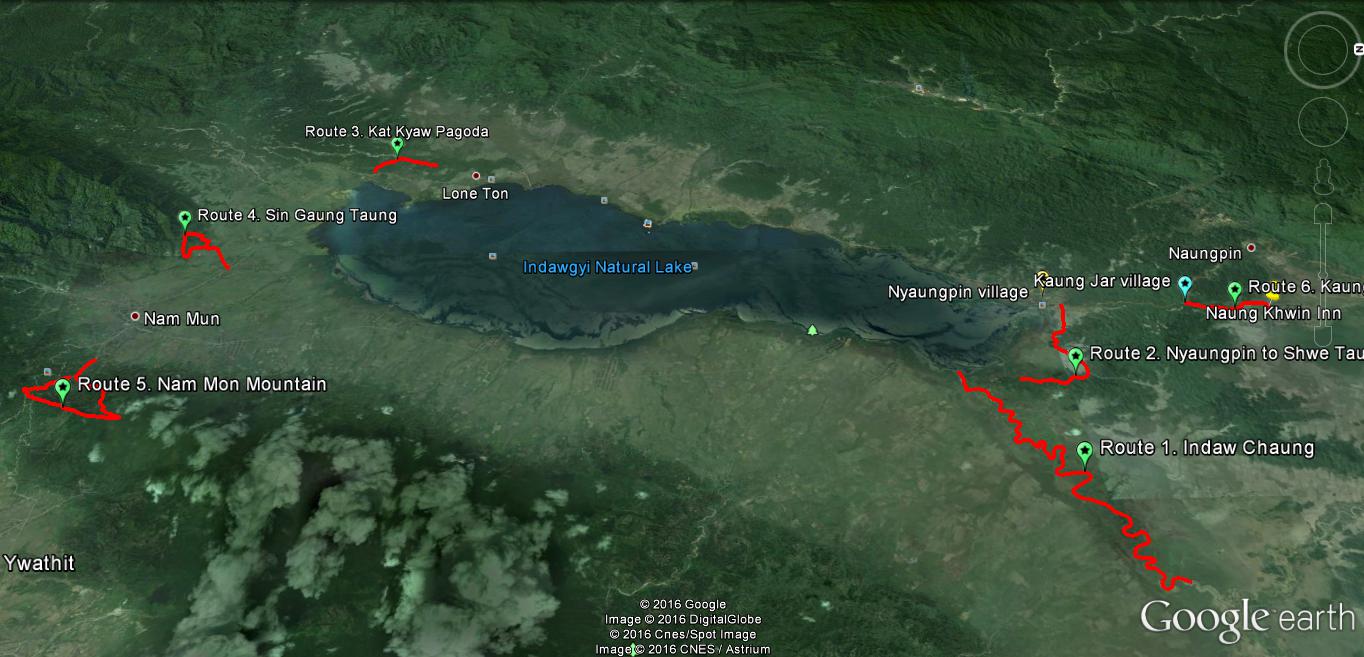
Suggestion routes for bird watching tour showing in red tracks
Route 1. Indawgyi Lake and Indaw Chaung
This route is selected along the shore of the lake and along the Indaw Chaung river especially for water bird but some forest bird species can be seen along the shore from the forest. Here is the itinerary and bird we can see.
Birding will start in early morning after breakfast and begin by boat from Lonton village following the south, east and west shore. Lunch or a short break could be either at the local noodle shop in the village along the east shore or at the small pagoda on the eastern slope over the meanders of the of Indaw chaung flood plain. Alternatively lunch could also be served at the small village of Ton San Kha village. After the break birding will be continued along the Indaw chaung. There we can see Lesser Whistling-duck, Greylag Goose, Greater White-fronted Goose, Bar-headed Goose, Ruddy Shelduck, Cotton Pygmy-goose, Gadwall, Eurasian Wigeon, Mallard, Nothern Shoveler, Nothern Pintail, Garganey, Eurasian Teal, Red-crested Pochard, Common Pochard, Ferruginous Pochard, Tufted Duck, Little Grebe, Great Crested Grebe, Asian Openbill, Glossy Ibis, Indian Pond-heron, Eastern Cattle Egret, Purple Heron, Great Egret, Intermediate Egret, Little Egret, Little Cormornat, Great Cormorant, Oriental Dater, Peregrine Falcon, Black-shouldered Kite, Black Kite, Brahminy Kite, Crested Serpent-eagle, Western Marsh-harrier, Eastern Marsh-harrier, Shikra, Besra, Greater Spotted Eagle, Grey-headed Swamphen, Common Moorhen, Common Coot, Black-winged Stilt, Northern Lapwing, Grey-headed Lapwing, Red-wattled Lapwing, Little Ringed Plover, Pheasant-tailed Jacana, Bronze-winged Jacana, Common Sandpiper, Green Sandpiper, Wood Sandpiper, Temminck’s Stint, Small Pratincole, Brown-headed Gull, Black-headed Gull, Oriental Turtle-dove, Spotted Dove, Plaintive Cuckoo, Greater Coucal, Asian Palm-swift, Stork-billed Kingfisher, Ruddy Kingfisher, Collared Kingfisher, Littler Green Bee-eater, Common Hoopoe, Lineated Barbet, Greater Flameback, Black-naped Oriole, Black-hooded Oriole, Ashy Woodswallow, Black Drongo, Rufous Treepie, Long-tailed Shrike, Grey-backed Shrike, Eurasian Tree-sparrow, Rosy Pipit, Olive-backed Pipit, White Wagtail, Eastern Yellow Wagtail, Citrine Wagtail, Black-faced Bunting, White-vented Myna, Collared Myna, Common Myna, Vinous-breasted Myna, Asian Pied Starling, Chestnut-tailed Starling, Naumann’s Thrush, Bluethroat, Eastern Stonchat, Pied Bushchat, Oriental Magpie-robin, Oriental Skylark, Red-whiskered Bulbul, Red-vented Bulbul, Common Sand-martin, Barn Swallow, Wire-tailed Swallow, Red-rumped Swallow, Radde’s Warbler, Dusky Warbler, Puff-throated Babbler, Oriental Reed-warbler, Scaly-breasted Munia, Chestnut Munia, Common Tailorbird and Plain Prinia.

Birding in the main lake and Indaw chaung by boat
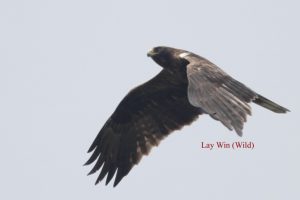
Booted Eagle
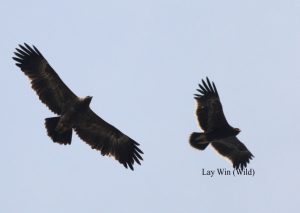
Greater Spotted Eagle
Route 2. Nyaungpin village to Shwe Taung Mountain
This route is selected from Nyaungpin village to Shwe Taung Mountain for forest bird and important species of mammal “Hoolock Gibbon”. Here is the itinerary - drive to Nyaungpin village by car or by boat and start walking from the end of the village cross some patch of paddy field to some remnant forest to Nar Lat Tan village and then trek up to Shwe Taung Mountain through forest. There we can see both mammals (especially Hoolock Gibbon) and forest birds on the way such as – White-rumped Vulture, Asian Openbill, Black Stork, Wolly-necked Stork, Black-shouldered Kite, Brahminy Kite, Crested Serpent-eagle, Oriental Honey-buzzard, Jerdon’s Baza, Pied Harrier, Western Marsh-harrier, Eastern Marsh-harrier, Shikra, Besra, Greater Spotted Eagle, Booted Eagle, Oriental Pied Hornbill, Great Hornbill, Spotted Dove, Plaintive Cuckoo, Greater Coucal, Asian Palm-swift, Littler Green Bee-eater, Common Hoopoe, Coppersmith Barbet, Blue-throated Barbet, Lineated Barbet, Greater Flameback, Black-naped Oriole, Black-hooded Oriole, Red-breasted Parakeet, Streaked Spiderhunter, Ashy Woodswallow, Black Drongo, Ashy Drongo, Bronzed Drongo, Brown Shrike, Long-tailed Shrike, Grey-backed Shrike, Eurasian Tree-sparrow, Rosy Pipit, Olive-backed Pipit, White Wagtail, Eastern Yellow Wagtail, Citrine Wagtail, White-vented Myna, Collared Myna, Common Myna, Vinous-breasted Myna, Asian Pied Starling, Chestnut-tailed Starling, Bluethroat, Eastern Stonechat, Pied Bushchat, Oriental Magpie-robin, Oriental Skylark, Himalayan Black Bulbul, Red-whiskered Bulbul, Red-vented Bulbul, Black-crested Bulbul, White-throated Bulbul, Olive Bulbul, Common Sand-martin, Barn Swallow, Red-rumped Swallow, Greenish Warbler, Yellow-browed Warbler, Radde’s Warbler, Dusky Warbler, Puff-throated Babbler, Oriental Reed-warbler, Striated Grassbird, Zitting Cisticola, Watercock, Common Tailorbird and Plain Prinia.

Forest on the way from Nyaungpin village to Shwe Taung Hill
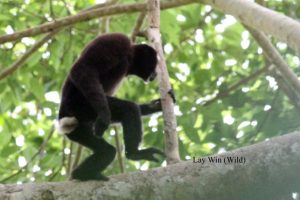
Hoolock Gibbon
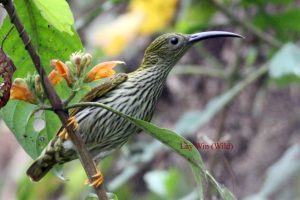
Streaked Spiderhunter
Route 3. Kat Kyaw pagoda and west of Lonton village
This route is selected from Lonton village to Kat Kyaw pagoda trail in south-west of Lonton village and does bird watching in the whole morning in the habitat of paddy field and secondary forest and west of Lonton village in the afternoon between paddy field and secondary forest. Lunch will be in Lonton village.
Bird watching will start in early morning after breakfast by walking from Lonton village. There we can see the species of – Red Junglefowl, some waterbirds fly over, Lineated Barbet, Blue-throated Barbet, Coppersmith Barbet, Wreathed Hornbill, Oriental Pied Hornbill, Great Hornbill, Indian Roller, Dollarbird, Common Hoopoe, White-throated Kingfisher, Green-billed Malkoha, Plaintive Cuckoo, Greater Coucal, Little Green Bee-eater, Blue-tailed Bee-eater, Chestnut-headed Bee-eater, Red-breasted Parakeet, Asian Palm Swift, Oriental Turtle Dove, Spotted Dove, Red Collared Dove, Barred Cuckoo Dove, Thick-billed Green Pigeon, Yellow-footed Green Pigeon, Emerald Dove, Common Crane, Endangered - Sarus Crane, White-breasted Waterhen, Red-wattled Lapwing, Oriental Honey-buzzard, Crested Serpent Eagle, Pied Harrier, Common Kestrel, Cattle Egret, Golden-fronted Leafbird, Blue-winged Leafbird, Asian Fairy Bluebird, Brown Shrike, Long-tailed Shrike, Grey-backed Shrike, RufousTreepie, Eastern Jungle Crow, Black-hooded Oriole, Black-naped Oriole, Black Drongo, Ashy Drongo, Bronzed Drongo, Hair-crested Drongo, Greater Racket-tailed Drongo, Ashy Woodswallow, Grey-headed Canary Flycatcher, Black-naped Monarch, Large Woodshrike, Blue-throated Flycatcher, Oriental Magpie Robin, White-rumped Shama, Eastern Stonechat, Pied Bushchat, White-vented Myna, Barn Swallow, Streak-eared Bulbul, Red-vented Bulbul, Red-whiskered Bulbul, Black-crested Bulbul, Striated Grassbird, Zitting Cisticola, Common Tailorbird, Dusky Warbler, Greenish Warbler, Pin Striped Tit Babbler, Yellow-eyed Babbler, Olive-backed Sunbird, Paddyfield Pipit, Scaly-breasted Munia and Chestnut Munia.

Bird watching route in the west of Lonton village
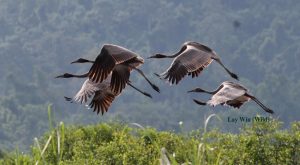
Sarus Crane
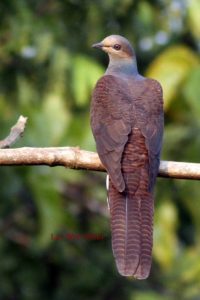
Barred Cuckoo-dove
Route 4. Sin Gaung Taung
This route is selected on the way between Nam Mon village and Lonton village named Sin Gaung Taung pagoda and trail on the mountain range in south-west of Lonton village and does bird watching in the whole morning in the habitat of secondary forest and paddy field. We will drive to Sin Gaung Taung monastery and stop there by car or motorcycle, then start birding from the foot hill and trek up along the mountain range. Here we can see the species of – Red Junglefowl, Lineated Barbet, Blue-throated Barbet, Coppersmith Barbet, Wreathed Hornbill, Oriental Pied Hornbill, Great Hornbill, Indian Roller, Dollarbird, Common Hoopoe, Green-billed Malkoha, Plaintive Cuckoo, Greater Coucal, Little Green Bee-eater, Blue-tailed Bee-eater, Red-breasted Parakeet, Asian Palm Swift, Spotted Dove, Red Collared Dove, Thick-billed Green Pigeon, Yellow-footed Green Pigeon, Greater Flameback, Oriental Honey-buzzard, Oriental Hobby, Black-shouldered Kite, Brahminy Kite, Eastern Marsh-harrier, Pied Harrier, Crested Serpent Eagle, Common Kestrel, Cattle Egret, Golden-fronted Leafbird, Blue-winged Leafbird, Asian Fairy Bluebird, Brown Shrike, Long-tailed Shrike, Grey-backed Shrike, Eastern Jungle Crow, Black-hooded Oriole, Black-naped Oriole, Little Pied Flycatcher, Black Drongo, Ashy Drongo, Bronzed Drongo, Hair-crested Drongo, Greater Racket-tailed Drongo, Ashy Woodswallow, Grey-headed Canary Flycatcher, Black-naped Monarch, Large Woodshrike, Blue-throated Flycatcher, Oriental Magpie-robin, White-rumped Shama, Eastern Stonechat, Pied Bushchat, Red-wattled Lapwing, Wood Sandpiper, Temminck’s Stint, Collared Owlet, White-vented Myna, Crested Myna, White-vented Myna, Collared Myna, Common Myna, Vinous-breasted Myna, Black-collared Starling, Asian Pied Starling, Bluethroat, Barn Swallow, Streak-eared Bulbul, Red-vented Bulbul, Red-whiskered Bulbul, White-throated Bulbul, Puff-throated Bulbul, Black-crested Bulbul, Stiated Grassbird, Zitting Cisticola, Common Tailorbird, Rufescent Prinia, Plain Prinia, Dusky Warbler, Greenish Warbler, Pin-striped Tit-babbler, Yellow-eyed Babbler, Olive-backed Sunbird, Paddyfield Pipit, Scaly-breasted Munia and Chestnut Munia, Common Iora, Little Spiderhunter, Streaked Weaver, Baya Weaver, Oriental Skylark, Yellow-bellied Warbler, Yellow-browed Warbler and Golden Babbler.
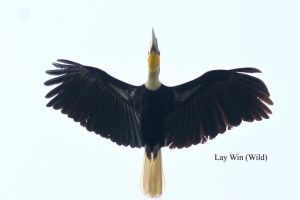
Wreathed Hornbill
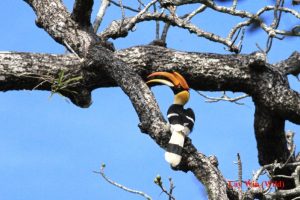
Great Hornbill
Route 5. Nam Mon Mountain
This route is selected in the area near Nam Mon village 45 minutes from Lonton village by car or by motorcycle. The birding trail is start from the village and up to the mountain range in the secondary and primary forest along the existing trail. It is a little bit hard trekking route suitable for young people and but for soft birding trek can be done along the old main road from the village and lunch will be at 11Mile, view point. Here we can see the species of - Oriental Hobby, Oriental Honey-buzzard, Crested Serpent-eagle, Besra, Wood Sandpiper, Spotted Dove, Barred Cuckoo-dove, Emerald Dove, Red-breasted Parakeet, Green-billed Malkoha, Asian Barred Owlet, Asian Palm-swift, Dollarbird, Blue-bearded Bee-eater, Oriental Pied Hornbill, Wreathed Hornbill, Great Barbet, Blue-throated Barbet, Greater Yellownape, Grey-headed Woodpecker, Greater Flameback, Long-tailed Broadbill, White-bellied Erpornis, Scarlet Minivet, Black-hooded Oriole, Maroon Oriole, Common Iora, Black Drongo, Ashy Drongo, Bronzed Drongo, Lesser Racket-tailed Drongo, Greater Racket-tailed Drongo, Hair-crested Drongo, Brown Shrike, Grey-backed Shrike, Streaked Spiderhunter, Little Spiderhunter, Plain Flowerpecker, Blue-winged Leafbird, Golder-fronted Leafbird, Orange-bellied Leafbird, Asian Fairy-bluebird, Eurasian Tree-sparrow, White Wagtail, Bluethroat, White-capped Water-redstart, Black-backed Forktail, Blue-throated Flycatcher, Oriental Magpie-robin, Striated Bulbul, Black-crested Bulbul, Red-whiskered Bulbul, Red-vented Bulbul, Olive Bulbul, White-throated Bulbul, Puff-throated Bulbul, Himalayan Black Bulbul, Barn Swallow, Yellow-bellied Warbler, Artic Warbler, Grey-cheeked Fulvetta, Brown-cheeked Fulvetta, Golden Babbler, Pin-striped Tit-babbler, White-crested Laughtingthrush, Common Tailorbird and Plain Prinia.

Forest along the route of Nam Mon
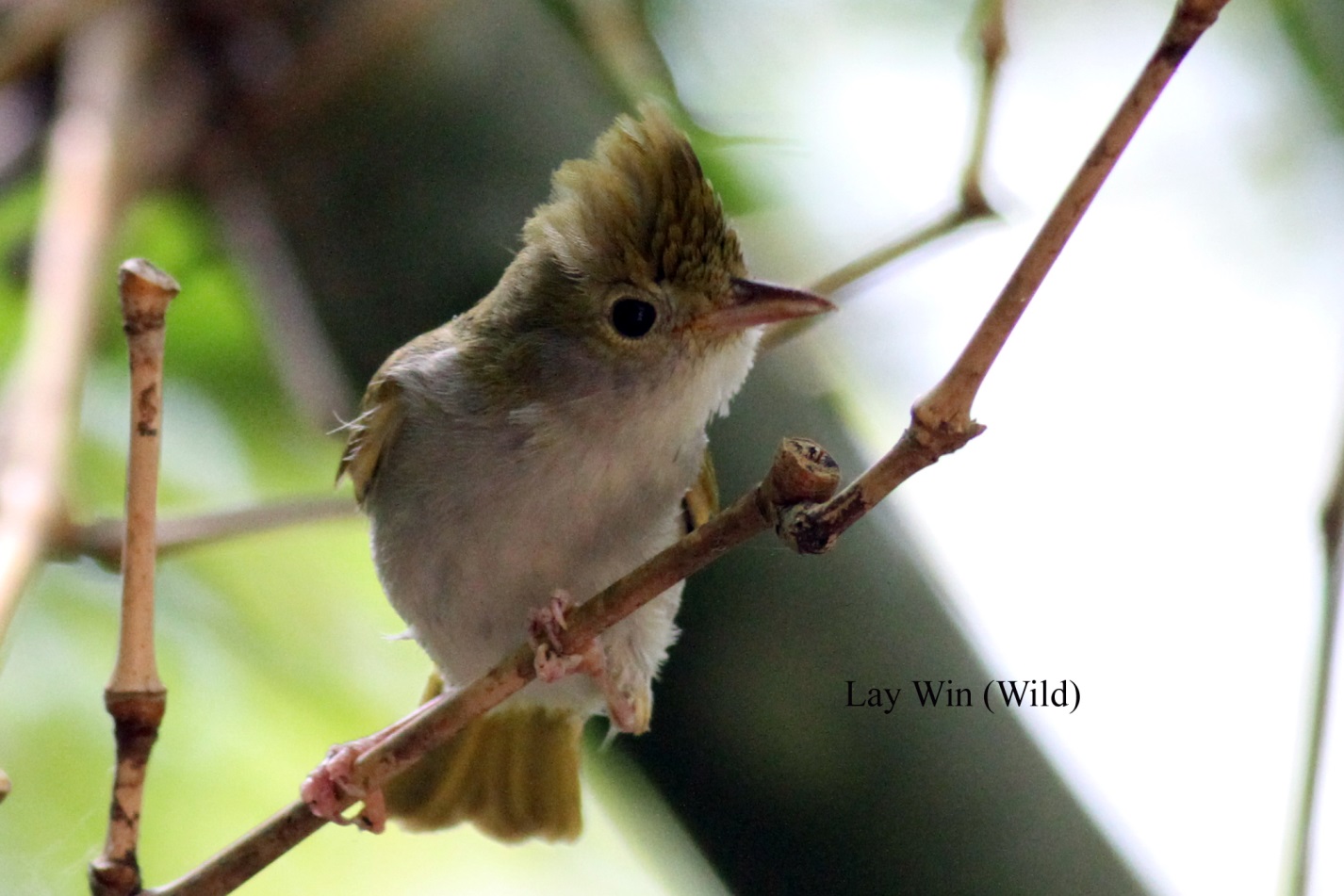
White-bellied Erpornis
Route 6. Kaung Jar village to Naung Khwin Inn
This route is selected from Kaung Jar, Kachin village, to Naung Khwin Inn in the north-west of Indawgyi Lake. It takes one hour drive from Lonton village by car or by motorcycle. There is a good chance to see the globally threaten species such as critically endangered – vultures and vulnerable – adjutant.
Lesser Whistling-duck, Ruddy Shelduck, Eurasian Wigeon, Northern Pintail, Eurasian Teal, Asian Openbill, Woolly-necked Stork, Lesser Adjutant, Glossy Ibis, Pond Heron, Grey Heron, Purple Heron, Great Egret, Intermediate Egret, Little Egret, Spot-billed Pelican, Little Cormorant, Oriental Honey-buzzard, Brahminy Kite, Wite-rumped Vulture, Slender-billed Vulture, Crested Serpent-eagle, Eastern Marsh-harrier, Pied Harrier, Booted Eagle, Ruddy-breasted Crake, Grey-headed Swamphen, Common Moorhen, Common Crane, Black-winged Stilt, Northern Lapwing, Grey-headed Lapwing, Little Ringed Plover, Pheasant-tailed Jacana, Common Snipe, Green Sandpiper, Wood Sandpiper, Spotted Dove, Emerald Dove, Red-breasted Parakeet, Lesser Coucal, Large-tailed Nightjar, Asian Palm-swift, Indian Roller, White-throated Kingfisher, Common Kingfisher, Little Green Bee-eater, Common Hoopoe, Oriental Pied Hornbill, Wreathed Hornbill, Eurasian Wryneck, Black Drongo, Ashy Drongo, Eastern Jungle Crow, Long-tailed Shrike, Grey-backed Shrike, Scaly-breasted Munia, Chestnut Munia, Rosh Pipit, Richard’s Pipit, White Wagtail, Eastern Yellow Wagtail, Citrine Wagtail, Little Bunting, Crested Myna, Jungle Myna, Asian Pied Starling, Bluethroat, Eastern Stonechat, Pied Bushchat, Jerdon’s Bushchat, Oriental Magpie-robin, Oriental Skylark, Red-whiskered Bulbul, Red-vented Bulbul, Barn Swallow, Red-rumped Swallow, Yellow-browed Warbler, Dusky Warbler, Chestnut-capped Babbler, Striated Grassbird, Zitting Cisticola, Yellow-bellied Prinia and Plain Prinia.
Naung Khwin Inn (Lake) in the north-west of Indawgyi Lake
White-rumped Vulture
